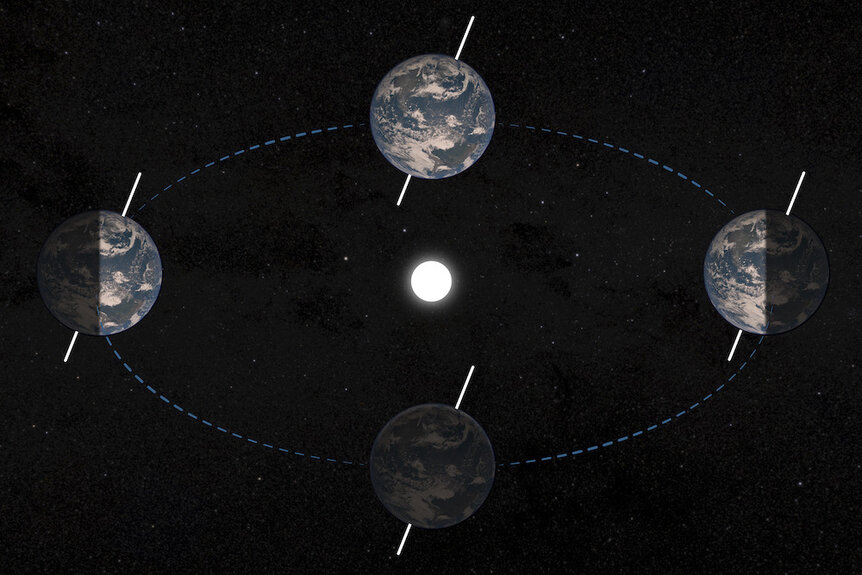Create a free profile to get unlimited access to exclusive videos, sweepstakes, and more!
Understanding Leap Years: Why February Sometimes Gets an Extra Day
We're just trying to get as close to true time as possible.
The 2022 return of Quantum Leap (streaming now on Peacock) saw Ben Song (Raymond Lee) stepping into the legendary shoes of Sam Beckett (Scott Bakula) as he leapt into time-spanning adventures. Each episode, Ben lives through some alternate version of the past, correcting errors in history and hoping that the next leap will take him home.
Here in 2024, and in the real world, we’re preparing to make a leap of our own, a leap through time. Rather, a leap in the way we attempt to perfectly track the passage of time in an imperfect universe. The problem, from a human perspective, is that our universe doesn’t operate in neatly divisible ways. Put more simply, the year doesn’t divvy up into an equal number of days.
While 365 is the correct number of days in the year if you’re asked on a multiple-choice test, it’s not the whole truth. The length of the year – the amount of time it takes for our planet to make a complete circuit around the Sun – is closer to 365.24219 days or 365 days, 5 hours, 48 minutes, and 56 seconds.
That might not seem like much of a difference, but it adds up! If we expect all days to be exactly 24 hours and we turn the calendar over after exactly 365 days each year, then we’re going to be off by a day every four years. In other words, the calendar will say it’s January 1 when it’s actually December 31, by the solar system’s reckoning. If left unchecked, summer and winter would completely swap places in the calendar every 730 years. We can’t have that, so what do we do?
For More on Time:
Nuclear Clocks Could Unlock Secrets of the Universe
Scientists Confirm Time Moved More Slowly in the Early Universe
What time is it on the Moon? It’s About Time we Figure it Out
Why We Have a Leap Year Every Four Years
The solution is relatively simple, at least at first glance. If our calendar drifts ahead by a day every four years, we just need to invent a day and slot it in. Enter: February 29. It doesn’t really matter where it goes in the calendar. We could add a day to any month, it could even be a day without a month. That might be fun, but February drew the short straw when they were handing out days, so it’s only fair it should go there. And that fixes the problem, almost.
A leap day every four years would be the end of the story if the year were exactly 365.25 days, but it isn’t. Here, we have the opposite problem. At first, we were treating the year as if it were shorter than it was, so we had to add a day, now we’re treating the year as if it’s a little longer than it is, so we’re going to have to remove a day somewhere.
In an effort to account for those pesky 5 hours, 48 minutes, and 56 seconds we’ve overshot and added about 45 minutes too many. And every 4 years we drift forward another 45 minutes until eventually we’d end up celebrating the new year a day too late. To correct for that, we skip leap year every now and again based on a few simple rules. We have a leap year every four years, on years that are divisible by four (2016, 2020, 2024, etc.) unless the year is divisible by 100. In practice, that means that years at the top of centuries (1800, 1900, etc.) are not leap years. There is one other exception. If the year is also divisible by 400, then the leap year is back on. That’s why the year 2000 was a leap year, even though 2100 won’t be.
This sort of tenuous back and forth between adding a day into February or not adding a day is our best effort at straddling the line between the calendar as we’ve imagined it and the universe as it actually is.
The Mysterious and Possibly Extinct Leap Second
Leap years aren’t the only adjustment we make to our timekeeping and it’s not even the weirdest. That honor has to go to leap seconds. Unlike leap years which are regular and predictable, correcting for some well-understood rounding errors, leap seconds are more sporadic because they are caused by different processes.
The leap year is a way of shoring up our calendars with the planet’s orbit around the Sun, but leap seconds are an attempt to correct for the speed of Earth’s rotation around its own axis. The length of a day is exactly 86,400 seconds, except for when it isn’t. From a human perspective, the Earth turns at a consistent rate, completing a rotation every single day, but on geologic or cosmic timescales things are a little more complicated. For one thing, the day is getting longer. The Moon is stealing rotational energy from the Earth, boosting itself into a higher orbit and slowing the planet’s rotation. The day gets about 2 milliseconds longer every 100 years.
In addition, geological or astronomical events can change the way the Earth rotates ever so slightly, and global timekeepers add a leap second to balance the chronological books. A leap second has been added five times since the year 2000, most recently in 2016, and that may have been the last. The leap second is being phased out in favor of adding a leap minute once every 50 years or so.
Spend this leap year with Quantum Leap, streaming now on Peacock.
































